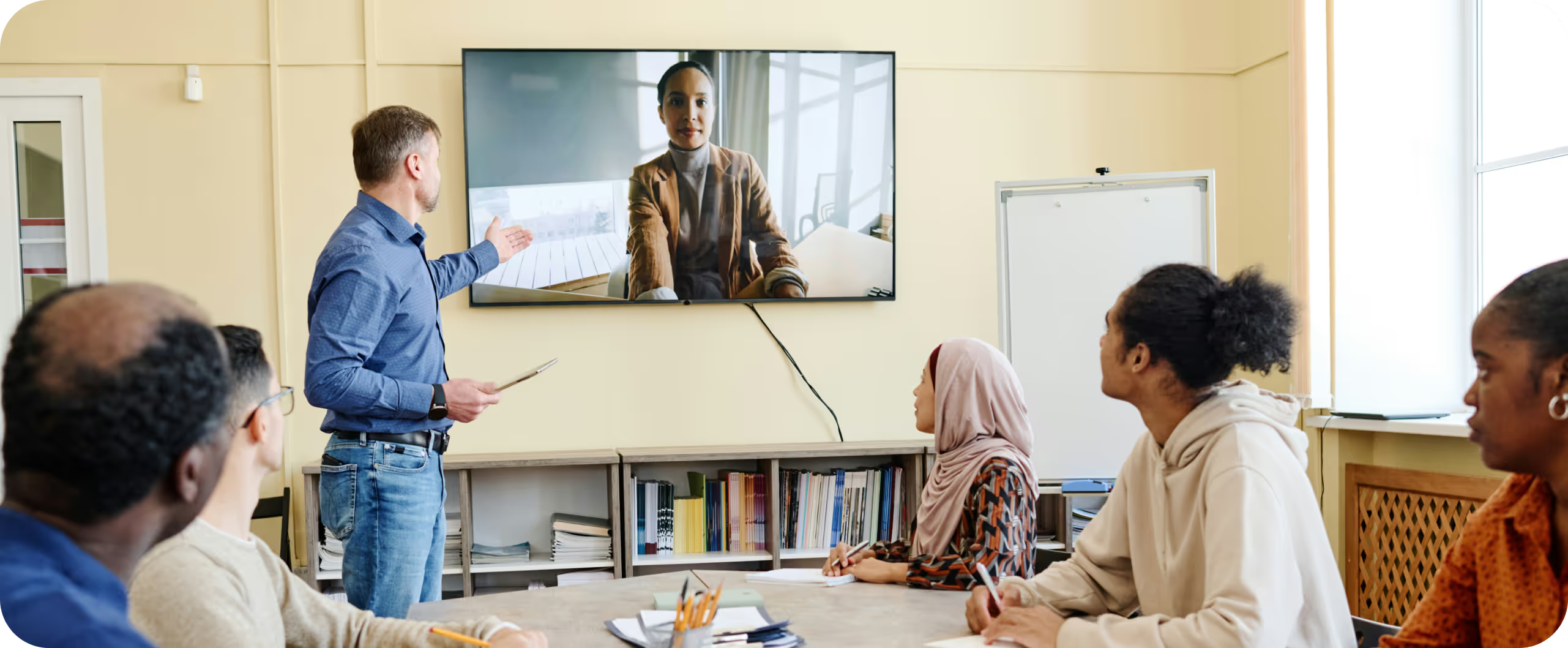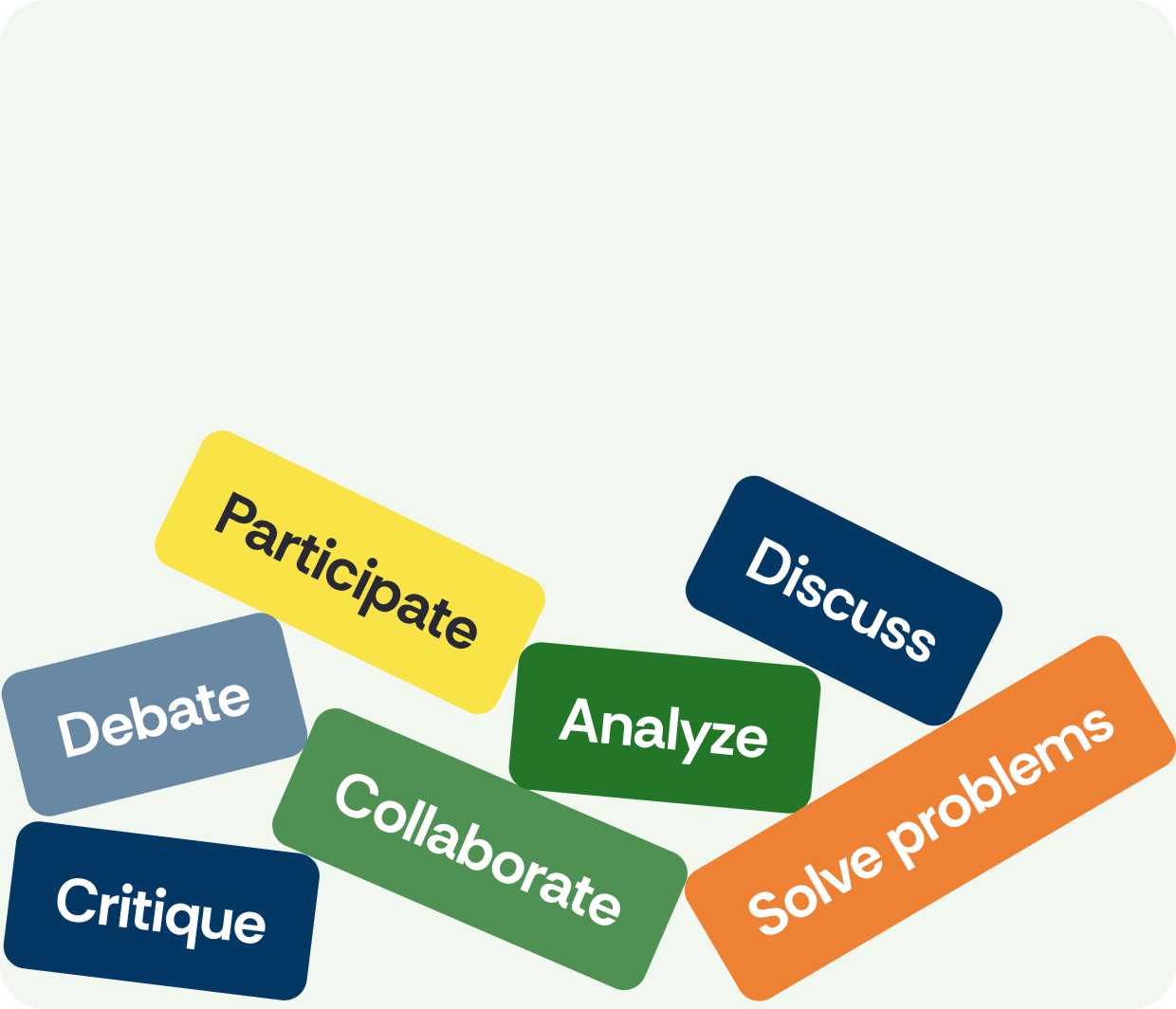Peer-Led Team Learning supported by FeedbackFruits
Empower students through collaborative, student-driven learning—enhance problem-solving, communication, and leadership skills with peer-led team learning.

What is peer-led team learning?
Peer-led team Learning (PLTL) is an active, student-centered instructional model in which small teams collaborate to solve complex problems under the guidance of a peer leader—a student who has successfully completed the course and received training in facilitation. This structured, discussion-based approach shifts learning from passive reception to active problem-solving and inquiry-driven dialogue.

Why peer-led team learning?
Peer-Led Team Learning (PLTL) is backed by a growing body of research demonstrating its effectiveness in improving student engagement, academic performance, and retention across a wide range of disciplines, with especially strong results in STEM fields. By positioning trained peer leaders to facilitate small-group problem-solving sessions, PLTL creates a collaborative and supportive learning environment where students actively engage with course material rather than passively receiving information. This structure not only reinforces subject mastery but also promotes the development of critical thinking, communication, and teamwork skills.
Book a demoEnhancing academic performance
Studies show that PLTL improves student retention and achievement, particularly in STEM disciplines, by fostering engagement in structured, peer-led problem-solving activities.

Mintz, 2022
Peer-Led Team Learning: A Student-Faculty Partnership for Transforming the Learning Environment
Developing leadership and communication
Serving as peer leaders allows students to develop leadership, communication, and facilitation skills, preparing them for roles in academia and industry.

AE Dreyfuss, et al., 2021
A Short Guide to the Practice of Peer-Led Team Learning
Strengthening community
CRT creates an inclusive environment where students feel respected and valued, fostering collaboration, trust, and deeper engagement while embracing diverse perspectives.

University of Texas Rio Grande Valley, 2022
Peer-Led Team Learning
.avif)
How does FeedbackFruits support peer-led team learning?
FeedbackFruits supports Peer-Led Team Learning (PLTL) by offering collaborative learning activities that foster peer discussion, evaluation, and knowledge construction, making it an effective platform for this pedagogy. Group Member Evaluation can be used after problem-solving sessions to encourage accountability and self-reflection, as students assess their peers’ contributions and ensure equitable participation.
Peer Review further enhances critical thinking by allowing students to provide structured, constructive feedback on reports or reflections developed through team collaboration, helping peer-led groups refine their ideas and solutions. In addition, Discussions enable peer leaders to guide structured, inquiry-driven conversations by posing open-ended questions that prompt teams to explore multiple perspectives and justify their reasoning.
Together, these activities strengthen the PLTL model by creating interactive and accountable learning environments that empower students to take ownership of their learning.
Peer Review further enhances critical thinking by allowing students to provide structured, constructive feedback on reports or reflections developed through team collaboration, helping peer-led groups refine their ideas and solutions. In addition, Discussions enable peer leaders to guide structured, inquiry-driven conversations by posing open-ended questions that prompt teams to explore multiple perspectives and justify their reasoning.
Together, these activities strengthen the PLTL model by creating interactive and accountable learning environments that empower students to take ownership of their learning.
Get started with peer-led team learning using our pre-made learning templates
These templates—designed by experienced educators—offer proven structures for implementing peer-led team learning. Simply select a template, customize it, and launch engaging activities in minutes.
Browse all templatesPeer-led team learning, directly within your LMS
FeedbackFruits integrates seamlessly with your Learning Management System, making it simple to incorporate peer-led team learning activities into your existing courses. Whether you teach online, hybrid, or face-to-face, FeedbackFruits ensures that activating student participation is just a few clicks away—no additional overhead, no steep learning curve.





Explore our free resources about peer-led team learning

Facilitating group work and peer assessment at business schools
A full guide to help educators create meaningful learning experiences that welcome and motivate every student.
Read more
Culturally Responsive Teaching: a guide
Explore two strategies to create learning environment that address students’ diversity and background, culture, and ability.
Read more
Making group work "work": Scaling collaboration and feedback for active learning at Yale University
In this article, we explore the definition, benefits, and criteria of RSI. It also offers four top tips to incorporate RSI into your online course design.
Read moreSee what FeedbackFruits learning activities can be used to support peer-led team learning
Peer-led team learning is hard. FeedbackFruits makes it easier.
Unlock the full potential of peer-led team learning and more with the Learning Design System.
Explore the Learning Design System










